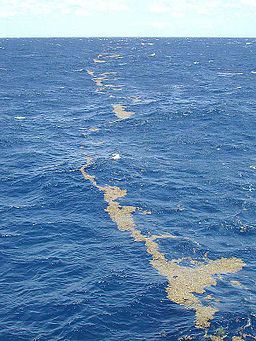
Geoengineering: A Far Off Solution to Climate Change
Geoengineering is the intentional manipulation of the earth’s climate by humans. As climate change progresses, and some see the climate moving beyond possible control, the goal would be to hamper and prevent the advent of extreme weather events predicted by so many leading climate scientists. Accordingly, two general manipulations are possible. The first is to tamper with the amount of solar radiation allowed to enter the atmosphere. The other is to reduce the amount of heat trapping gases in the atmosphere and effectively allow more solar radiation to escape back into space. Both methods have found themselves in the news as of late.
In June 1991, the eruption of Mount Pinatubo, an active volcano located on the island of Luzon in the Phillipines, released millions of tons of sulfur dioxide into the atmosphere. Sulfate particles in the upper atmosphere reflect sunlight. Consequently, global average temperature dropped 0.4-0.5oC in the two years following Pinatubo’s eruption as an aerosol cloud engulfed the earth.
Two Harvard engineers plan to mimic that process (albeit on a much smaller scale) by releasing sulfate aerosols into the upper atmosphere from a balloon tethered 80,000 feet above Ft. Sumner, New Mexico. Although the aim of the experiment is not to alter the climate, the scientists hope to improve complex ozone models which are currently too uncertain to justify large-scale sulfate spraying. As the science advances, sulfate particles could provide a low cost method to combat rising temperatures. Opponents, however, argue that increased sulfate concentrations may reduce rainfall and threaten our food supply.
In other news, a team of researchers from the Alfred Wegener Institute for Polar and Marine Research successfully generated phytoplankton growth by dumping seven tons of iron sulfate particles into the Southern Ocean. Overtime, the researchers found that at least 50 percent of the algae bloom sank to the ocean floor along with the atmospheric carbon it had absorbed during its growth. Although several experiments have shown the effectiveness of iron fertilization in spurring algae growth, this is the first experiment to determine whether or not the blooms sink.
Needless to say, one experimental result is a small step toward large scale application. Concerns remain as to how much carbon the oceans can hold before circulation carries it back to the surface, how long the oceans can sequester carbon, and how increases in algal blooms effect important fish populations. If proven, however, some researchers like Mike Markels and Richard Barber have estimated that the widespread use of iron fertilization could remove millions of tons of carbon from the atmosphere at the low cost of $2 per ton.
Geoengineering schemes to alter enormously complex geologic processes like the hydrologic and carbon cycles are often criticized as entertained science-fiction. As outlined above, the costs and benefits of such projects are both ambiguous and enormous. In worst case scenarios, a failed endeavor could cause further disruption to the earth’s climate. Moreover, if one nation employs a geoengineering venture that successfully combats climate change at home at the expense of other nations, heightened potential for international conflict may ensue.
Because of large uncertainties and potential security quandaries, geoengineering techniques are still far from broad application. Hence, there is great need for continued research on the effects of practices like sulfate spraying and ocean seeding. Until that research is more fully developed, curbing our emissions will remain the most reliable way to combat climate change. We know climate change will pose serious threats to our environment and security; so let’s hedge against those risks the only way we know how, and emit less.






[…] Geoengineering: A Far Off Solution to Climate Change […]
[…] Geoengineering: A Far Off Solution to Climate Change […]
[…] the summer, this blog reported on the potential for technological solutions to global warming. There is evidence, for […]